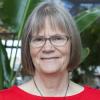Friday Flyer - February 27, 2015
Spotlight on International Muon Week: IMW has passed, but the work goes on. Last week, 42 participant schools fired up their cosmic ray detectors to capture a weeklong snapshot of cosmic ray data bathing the planet. The schools were far-flung covering the corners of the globe. Going into the week, teams from places like Singapore, Ecuador, India, South Africa, Tbilisi, Germany, and Japan plus 26 schools from the U.S. prepped their hardware so as not to miss a scrap of data. Want to see the global distribution? Go to the IMW Google Map: https://www.google.com/maps/d/viewer?mid=z0n3UY-gM9gs.k37Vdyf8R2.
Student teams experienced the trials of real-world, large-scale data collecting, hoping all things work out. Sometimes hardware failures trip up the process, but things are not a total loss. QuarkNet’s goal is student exposure to the real-data experience. Regardless of success or failure, the learning is always worth the effort. After the teams captured their data, the next steps are ongoing. Using their data, students analyze the cosmic ray flux and upload the flux plots to be posted on the Google Map. Click on the map pins to find the plots. Not all are there yet as many are still understanding their data and building the plots. If your school is an IMW participant, please try to complete your upload and share your flux plot. Others anxiously await your results; submit it to: http://rodshome.com/CosmicMap/SubmitPLOT/contactform.php.
But, it doesn’t end there. Jeff Rodriguez and Kevin Martz, who organized this effort, have matched up schools for long-distance conversations about the data and the results. Over the next several weeks, students might ask each other:
So, to the IMW teams, please prepare a one-page pdf report of your results. Include the names of the sites, plot pictures, and any discussion or conclusions from your collaboration. Contact your collaboration partner. If you do not have time for collaboration, please notify your partner and submit a quick report of your findings on your own. If you need a collaboration partner, send e-mail to Kevin Martz, and he’ll try to find one. Submit pdf form: http://rodshome.com/CosmicMap/SubmitPDF/contactform.php.
If you missed this fourth annual IMW, stay tuned. In the fall, IMW shares the effort with a partner at DESY Zeuthen in Germany for a one-day cosmic ray data capture. The two efforts are bookends on the school year and many of the same teams participate.
News from QuarkNet Central: Calling in idle detectors for maintenance. Not planning to use your cosmic ray detector anymore? Contact Dave Hoppert for directions to send it back to Fermilab. We pay the shipping!
News from the Elbe: final edition
Resources: 10 unusual detector materials from Symmetry
QuarkNet Staff Teachers:
Ken Cecire: kcecire@nd.edu
Tom Jordan: jordant@fnal.gov
Bob Peterson: rspete@fnal.gov
